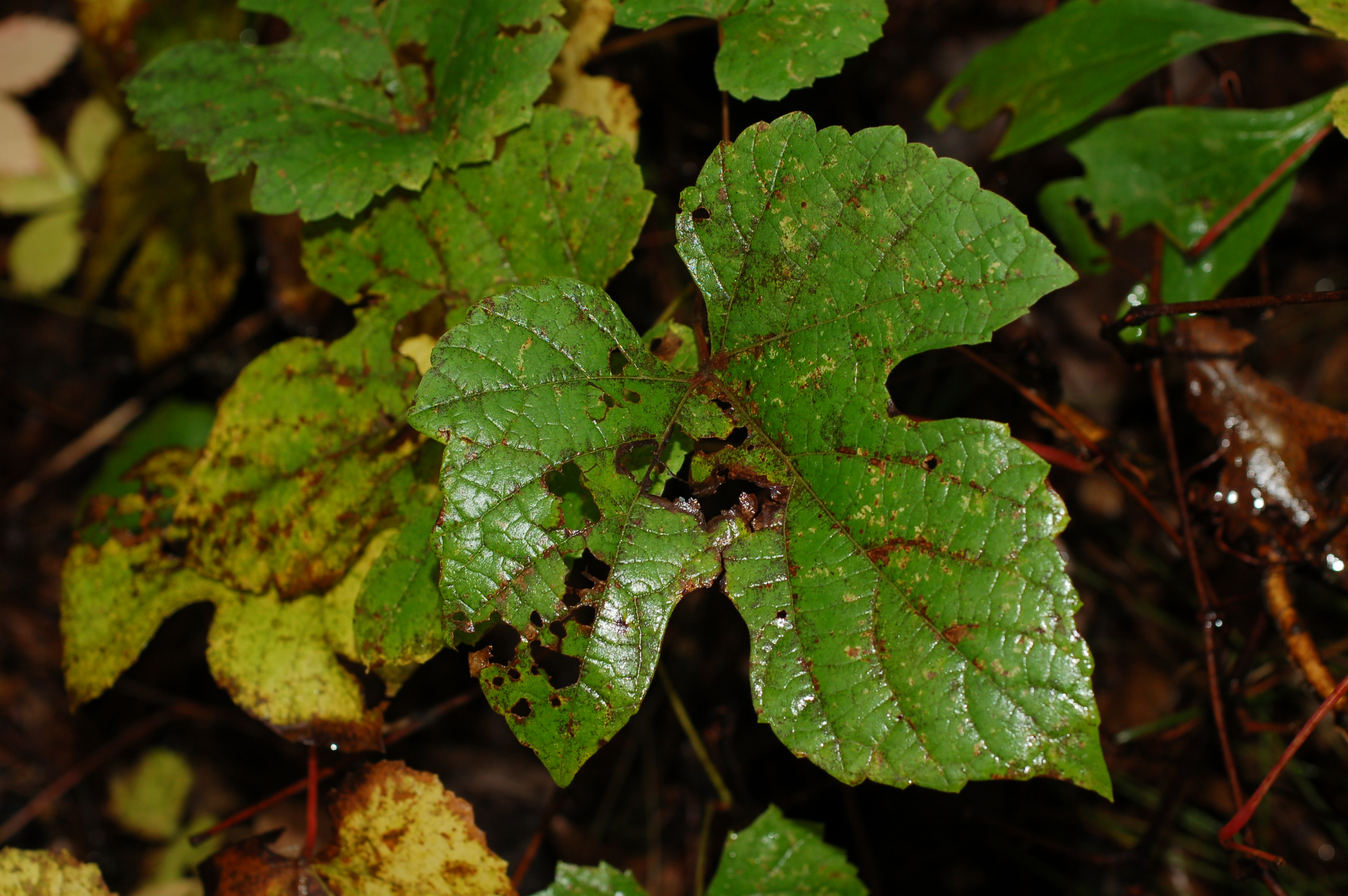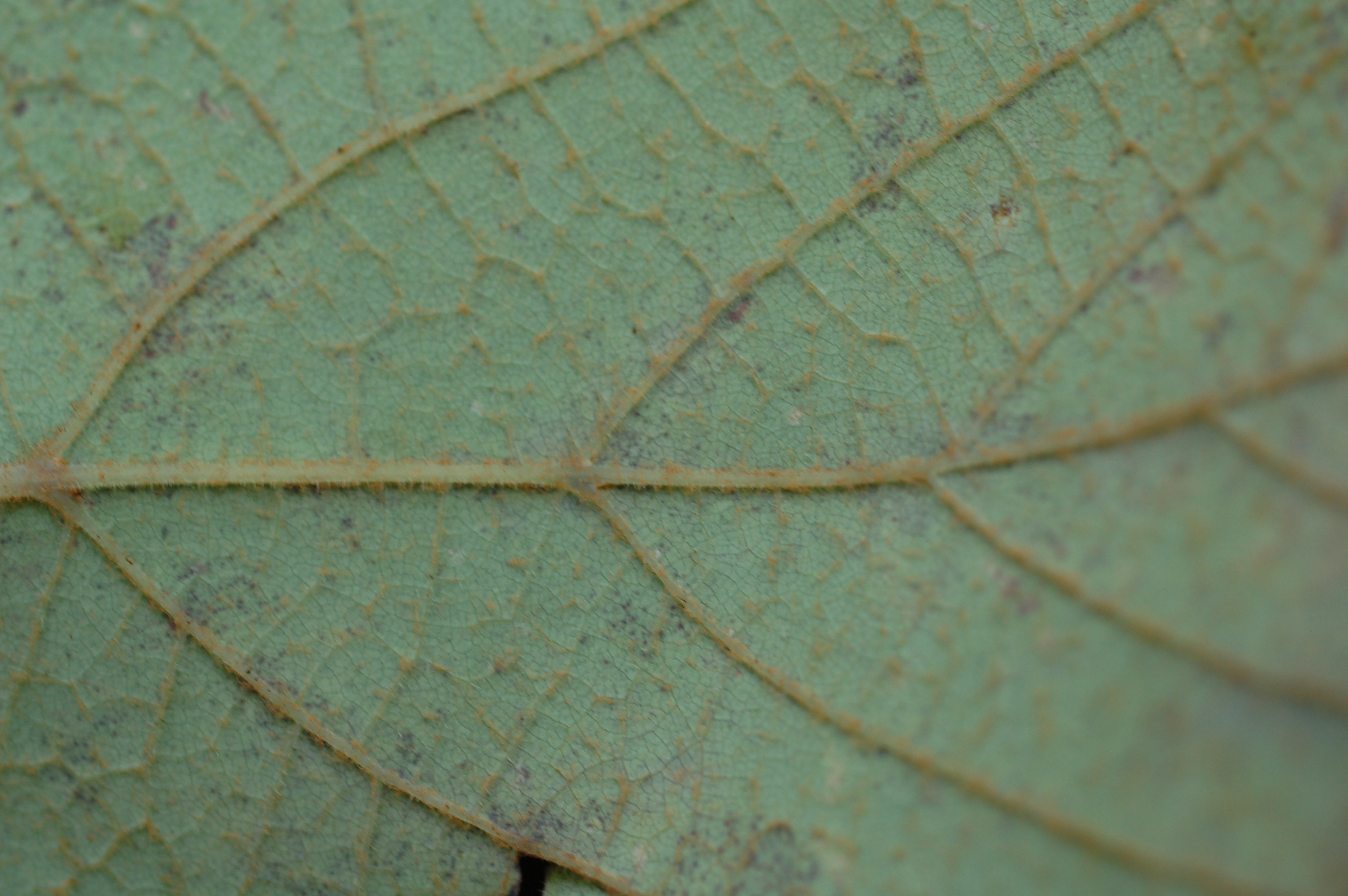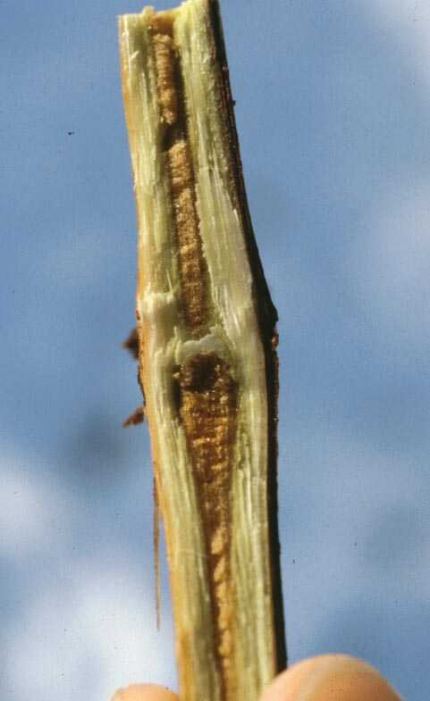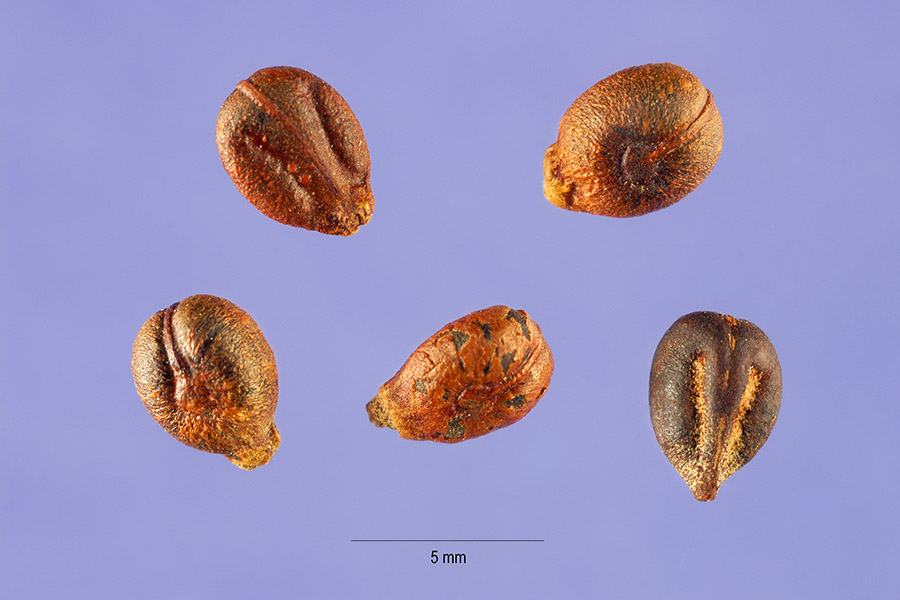 Download PDF
Download PDF
Name: Vitis aestivalis Michx.
Family: Vitaceae, the Grape Family
Common Names: Summer grape, pigeon grape, silverleaf grape, blueleaf grape.
Etymology: Vitis is Latin for grapevine. Aestivalis means “of the summer” (2).
Botanical synonyms (4):
V. lincecumii Buckl.
V. araneosus Leconte
V. gigas Fennell
V. labrusca L. var. aestivalis (Michx.)Regel
V. rufotomentosa Small
V. simpsonii Munson
V. sinuata (Pursh)G.Don
V. smalliana L.H.Bailey
V. vinifera L. var. aestivalis (Michx.)Kuntze
Quick Notable Features:
¬ Reddish-brown bark splitting into narrow strips
¬ Alternate, simple, cordate, toothed leaves
¬ Cob-webby hairs on leaf underside, especially along veins and at vein junctions
¬ Leaves and stems glaucous
Plant Height: Climbs up to 10m (3).
Subspecies/varieties recognized (7): V. aestivalis var. argentifolia (Munson) Fern., V. aestivalis var. aestivalis.
Most Likely Confused with: Often misidentified as riverbank grape V. riparia. Deeply lobed leaves may be confused with those of Humulus (6). Could also be confused with other Vitaceae species Parthenocissus tricuspidata and Ampelopsis brevipedunculata.
Habitat Preference: Upland and sandy forests, thickets, and sandy savannas. Prefers mesic to dry soils (3).
Geographic Distribution in Michigan: Found in Benzie county in the Upper Peninsula and most counties in the southern half of Lower Peninsula (6).
Known Elevational Distribution: Found in Appalachian oak forests, up to 1,000m (11).
Complete Geographic Distribution: Native to North America. Ranges north to Ontario and Massachusetts, south to Alabama, and west to Minnesota and Texas (1, 7, 8).
Vegetative Plant Description: High-climbing perennial liana, with a woody stem characterized by long reddish peeling bark. Leaves are simple, alternate, cordate to subrotund, toothed, and often 3-5 lobed. Leaf lobing is usually shallow or rounded. Venation is palmate. Leaves are 7-20cm long and broad. Undersides of leaves are sparsely covered with rust-colored cob-webby hairs, at least along veins. Pith is divided at nodes by a diaphragm, see figure to right (3, 6, 8).
Climbing Mechanism: Plant climbs using bifid axillary tendrils opposite the leaves. Tendrils are missing opposite every third node (7). Other species of Vitis have had tendrils experimentally treated with growth hormones, causing production of inflorescences on the tendrils, indicating the branch origin of the tendrils (12).
Flower Description: Flowers are borne in axillary panicles 5-15cm long. Flowers are perigynous, 5-merous, green, and incomplete: the calyx is essentially missing. Stamens are 5, opposite the 5 petals, and can be elongate to short and erect to reflexed if the flower is sterile or fertile, respectively. Pistils are rudimentary to well-developed depending on fertility. The superior ovary is 2-celled with 2 ovules per cell. A 5-lobed nectary disk is present at the base of the ovary. Styles are short; stigmas are 2-lobed (7).
Flowering Time: Late spring to early summer (May through July) in Northeastern United States (3).
Pollinator: Flowers are bee- and self-pollinated (10).
Fruit Type and Description: The fruit is a dark purple to black berry, 5-10mm in diameter. Fruits are borne in axillary panicles. Berries contain up to four seeds (7).
Seed Description: Seeds ovoid, 5-7mm long and 4-5mm broad (7, 8).
Dispersal Syndrome: Grapes are bird dispersed (12).
Distinguished by: V. aestivalis leaves are shallowly lobed to unlobed; serrations are low and broad. Leaves have reddish-brown cob-webby hairs on the undersides, especially along veins (6). Vitis riparia leaves have deeper, forward-pointing lobes and very little pubescence on leaf undersides.
Vitis species may be distinguished from similar-looking cucurbits (Echinocystis, Sicyos) by the tendrils, which arise opposite the leaves in Vitaceae; Cucurbit tendrils arise at 90° from leaves.
Vitis may be distinguished from Parthenocissus tricuspidata by its shredding and peeling bark; Parthenocissus bark is tight. Parthenocissus tendrils also terminate in adhesive disks, whereas Vitis tendrils are twining.
Vitis can be distinguished from Ampelopsis brevipedunculata by twig and fruit characteristics: Ampelopsis stems contains white pith and are covered by tight bark with lenticels (7); its berries are dry or have only a thin layer of pulp, and in the case of A. brevipedunculata, often grow in multiple colors on the same branch, giving the plant its name ‘Porcelainberry’ (6). Vitis bark is shredding and contains brown pith, and the berries are pulpy and black. Leaf morphology is typically unreliable in distinguishing the two genera.
Other members of the family in Michigan (number species): Ampelopsis (2), Parthenocissus (3), Vitis (3)
Ethnobotanical Uses: V. aestivalis is used by native Americans for a variety of purposes. Compound decoctions are taken for gynecological, gastrointestinal, urinary, oral, and pediatric aids. Leaves are taken as a liver aid. Plants can simply be taken as a “tonic.” Fruits are often made into beverages, breads, and cakes, or simply eaten raw (5).
 Phylogenetic Information: Vitaceae is a core eudicot recently added to the Rosids. They are now placed in the new order Vitales (APGIII). Vitales may be a sister group to all the Rosids. Vitaceae is most closely related to the Crossosomatales, Geraniales, and Myrtales (8,15).
Phylogenetic Information: Vitaceae is a core eudicot recently added to the Rosids. They are now placed in the new order Vitales (APGIII). Vitales may be a sister group to all the Rosids. Vitaceae is most closely related to the Crossosomatales, Geraniales, and Myrtales (8,15).
Interesting Quotation or Other Interesting Factoid not inserted above: Birds use peeling grapevine bark for nest construction. The berries are a favorite of wild turkeys (11). Box turtles in captivity that were fed Vitis aestivalis appear to positively influence percent germination (13).
Vitis tendrils and inflorescences grow at the same location (at nodes, opposite leaves) and their presences are mutually exclusive (either one or the other, not both). The two different structures develop from the same undifferentiated axillary primordia, which default into inflorescences. Interestingly, gibberellins, which normally stimulate flowering in plants, are responsible for the conversion of developing inflorescences into tendrils and the elongation of stem internodal zones in Vitis. This is crucial to the climbing habit of grapes (14).
Literature and websites used:
- USDA PLANTS Profile database. http://plants.usda.gov/java/profile?symbol=VIAE
- Charters, M. L. 2006. Calflora – California Plant Names. A Dictionary of Botanical Etymology. http://www.etymologie.info/~e/u_/us-__ca__.html
- Iverson, L., D. Ketzner, and J. Karnes. 2006. Vitis aestivalis. Illinois Plant Information Network. http://www.fs.fed.us/ne/delaware/ilpin/ilpin.html
- Wunderlin, R. and B. Hansen. 2006. Atlas of Florida Vascular Plants. University of South Florida Institute for Systematic Botany. http://www.plantatlas.usf.edu/default.asp
- Moerman, D. 2006. Native American Ethnobotany. University of Michigan – Dearborn. http://herb.umd.umich.edu/
- Voss, E. G. 1985. Michigan Flora Part II. Ann Arbor: University of Michigan.
- Gleason, H. A. 1963. Illustrated Flora of the Northeastern United States and Adjacent Canada, Volume 2. New York: Hafner Publishing Company, Inc.
- Fernald, M. L. 1950. Gray’s Manual of Botany, eighth edition. New York: American Book Company.
- APG II 2003. An update of the Angiosperm Phylogeny Group classification for the orders and families of flowering plants: APG II. Botanical Journal of the Linnean Society 141(4): 399-436.
- McGregor, S. E. 1976. Small Fruits and Brambles. In: Insect Pollination of Cultivated Crop Plants. http://gears.tucson.ars.ag.gov/book/
- Carey, J. H. 1994. Vitis aestivalis. In: Fire Effects Information System. http://www.fs.fed.us/database/feis/
- Srinivasan, C. and M. G. Mullins 1979 Flowering in Vitis: Conversion of tendrils into inflorescences and bunches of grapes. Planta 145(2):187-192.
- Braun, J. and G. R. Brooks, Jr. 1987. Box Turtles (Terrapene carolina) as Potential Agents for Seed Dispersal. American Midland Naturalist 117(2): 312-318.
- Boss, P. K. and M. R. Thomas. 2002. Association of dwarfism and floral induction with a grape ‘green revolution’ mutation. Nature. 416: 847-850.
- APG III (2009). An update of the Angiosperm Phylogeny Group classification for the orders and families of flowering plants: APG III. Botanical Journal of the Linnean Society 161: 105–121.
Image Credits (all used with permission):
1 and 2. Leaf images © Robyn J. Burnham, University of Michigan, Ann Arbor, MI.
3. Image of diaphragmed-pith from Old Dominion University http://www.odu.edu/~lmusselm/plant/index.php © Lytton John Musselman: lmusselm@odu.edu
4. Image of fruit © Ted Bodner, Southern Weed Science Society, Bugwood.org and also illustrated in James H. Miller, and Karl V. Miller. 2005. Forest plants of the southeast and their wildlife uses. Athens: University of Georgia Press.
5. Image of seeds property of ARS Systematic Botany and Mycology Laboratory. Washington, IN, with copyright by Steve Hurst @ USDA-NRCS PLANTS Database
6. Species distribution map, derived from the Michigan Flora Online.
PRIMARY AUTHOR: Susu Yuan with advice and additions from John Bradtke and Robyn J. Burnham
© Robyn J. Burnham, University of Michigan
For additional information on Michigan Plant Diversity web pages please contact Robyn J. Burnham via email: rburnham“at”umich.edu